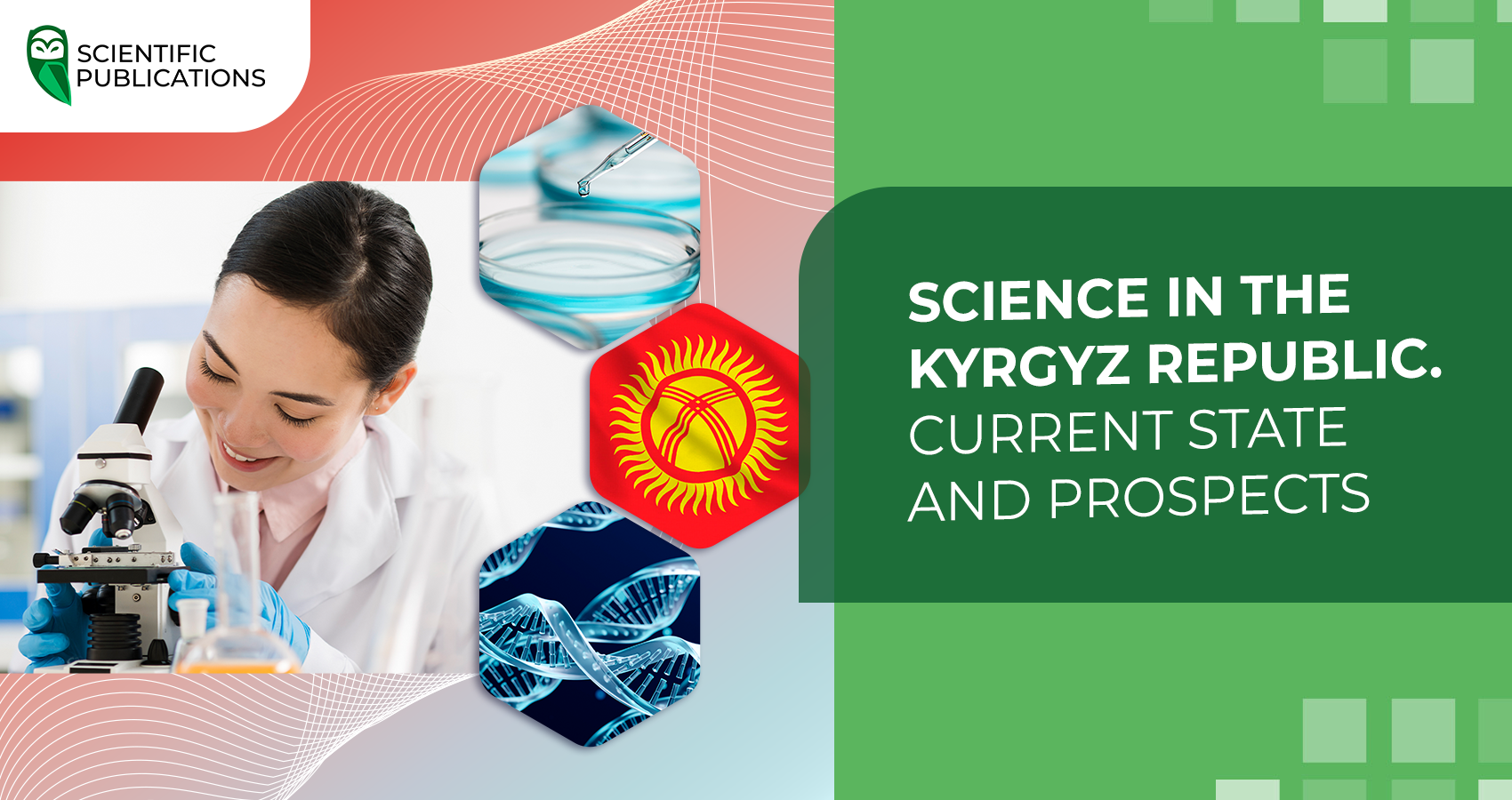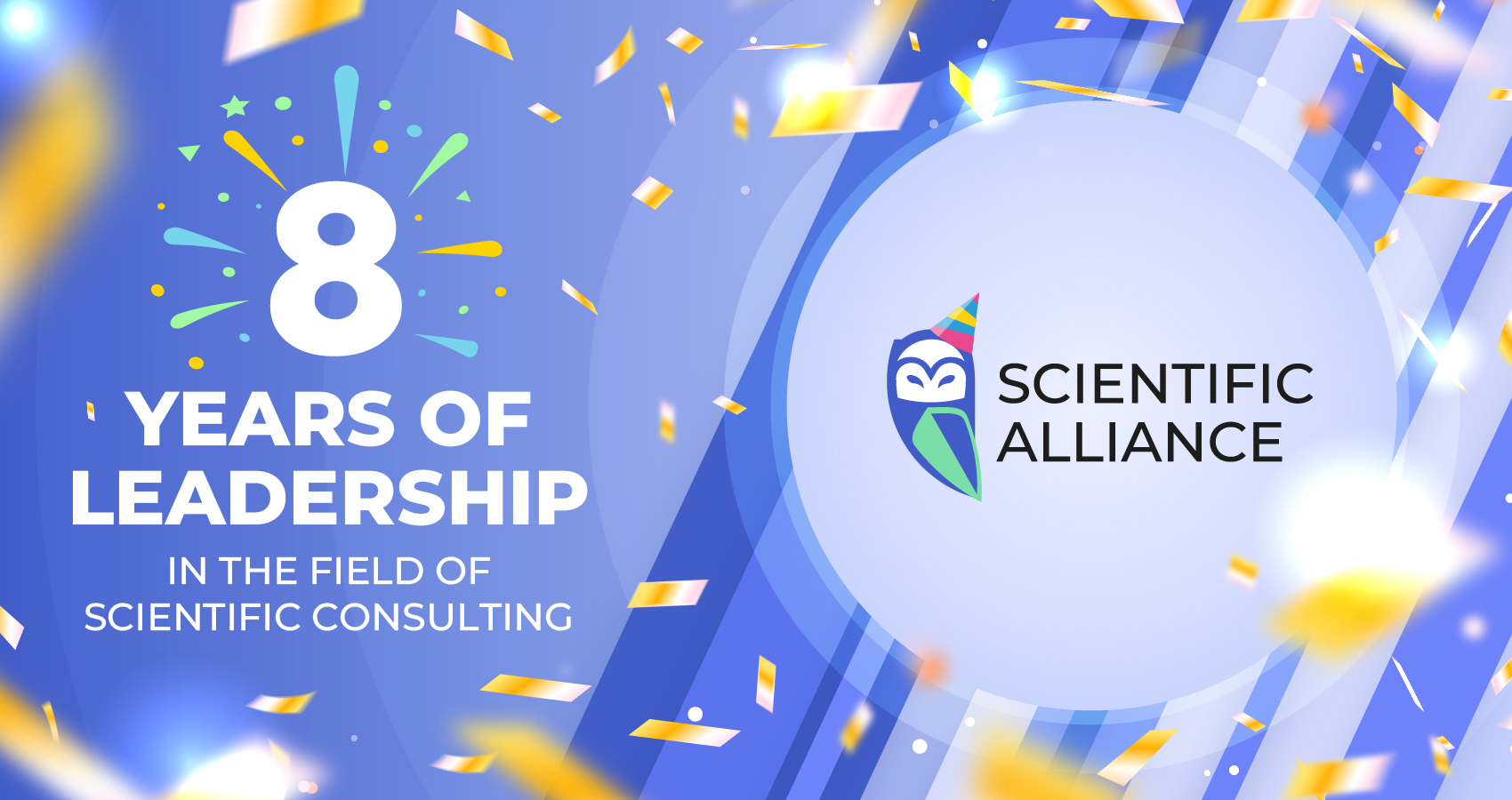The current state of science in the Kyrgyz Republic is worrying, especially when it comes to the National Academy of Sciences of the Kyrgyz Republic. What problems are characteristic of the scientific sphere in the Kyrgyz Republic today? What are the prospects for further development?

Each country has its own path and experience of development, and science, like any other industry, goes through stages of development and decline. Today, we will review and analyse the current state of science in the Kyrgyz Republic: what are the problems, what are the reasons for their occurrence, what measures are being taken to solve them, and what are the prospects for future development.
Science in the Kyrgyz Republic. The state in the past.
1990-2002
In 1990, the share of funds received from scientific and technical work in GDP was 0.7%, while in 1998-2001 the share fell to 0.21%.

The scientific potential in the Kyrgyz Republic is concentrated in 92 independent scientific and technical institutions, organisations, enterprises, higher education institutions, research and production centres and temporary creative teams.
The decline in investment in science has led to changes in the distribution of R&D funding. The share of state budget funds allocated to fundamental research has increased, while funding for scientific and technical services has virtually ceased. Expenditures from extra-budgetary funds decreased from 7% in 1996 to 0.3% in 2000.

This, in turn, is evidence of a decline in activity in the creation of various funds to support science, such as public, private and regional funds. A small share of R&D funding comes from the own funds of scientific organisations, earned from the execution of business contracts. Together with the income from renting premises, these funds are mainly spent on labour remuneration and operating costs, leaving only a small part for R&D.
In 1996, the share of customers' funds invested in research was 32.4%, and in 2000 it dropped to 18%. At the same time, funding from foreign investors increased 12-fold.

At the same time, the share of R&D aimed at creating new materials, products, processes, and prototypes of new equipment and products has decreased. This is largely due to the lack of demand for such work due to a lack of financial resources on the part of potential customers.
The plan for 2003-2005 called for an increase in funding for science from the republican budget to 1% of GDP, up from the then 0.21%, and a switch to a programme-based funding system. To reduce the relative burden on the budget, it was necessary to increase the share of extra-budgetary resources attracted to finance scientific research, including grants from foreign funds, and bring it to 50% of the total amount of science funding by 2005.
In addition, it was planned to increase the level of wages in the field of science to increase the number of scientists to 0.5-0.6% of the total number of people employed in the economy, compared to the then figure of 0.3%.
2008-2011
As of 2008-2011, the number of employees engaged in research and development in the Kyrgyz Republic more than halved compared to 1991.
In addition, during this period, the number of patents and publications by domestic scientists decreased. The existing innovation potential did not meet the needs of production, leading to a gap between science and industry. The industry uses an incorrect approach to funding - estimated funding of research under strict budget classification items forces research institutions to focus on resources rather than results. The laboratory and instrumentation facilities are morally and physically outdated, making it impossible to conduct research and development work that would meet the needs of consumers.
There is no mechanism for involving private business in the development of scientific potential, which leads to low activity of entrepreneurs in the field of research and development.
By 2011, international Good Scientific Practice standards covering key aspects related to the ethics of research and development were introduced.
Current status
In 2022, the Academy employed 1,235 scientists. Among the working scientists, 125 were doctors of sciences and 280 were candidates of sciences. Women accounted for 52% of the total number of employees.

In 2022, there were 69 scientific organisations in the Republic, of which the higher education sector accounted for 33% and the academic sector for 32%.
State budget expenditures on research and development in 2022 amounted to KGS 791 million, up 19% compared to 2018.

In the total volume of scientific and technical works performed in 2022, the largest number of them (more than 67%) were performed by organisations in the academic sector.
More than 7,000 people were involved in R&D, including academic staff of higher education institutions.
In the total number of employees engaged in research and development, more than 78% are research specialists, of whom 41% are doctors and candidates of sciences. At the same time, the share of women is 60%.
Postgraduate and doctoral studies provide an opportunity for specialists in various sectors of the economy to improve their education, scientific and pedagogical qualifications on the basis of higher professional education.
In 2022, the number of postgraduate students was 2.2 thousand, the largest share of which was in the medical (21%), pedagogical (16%), economic (11%) and legal (10%) fields of study. The number of doctoral students was 236.

The share of women in the total number of both postgraduate students and doctoral students was about 60%.
Reform of higher education and science
The Government of the Kyrgyz Republic has taken an active role in the development of the country's economy by adopting the National Development Programme until 2026. An action plan of hundreds of measures was developed, and financial resources were found for their implementation at the expense of international banks and funds.
The Ministry of Education and Science of the Kyrgyz Republic has periodically raised the issue of reforming higher education and science. Subsequently, the Council for Science and Innovation under the Kyrgyz Parliament began to work actively. A decision was made on the role of applied science in the country's economy and specific measures to remove obstacles to its development. However, the issue of training engineering and technical personnel remained open. Higher education and science are inextricably linked, especially in the training of specialists for the main sectors of the economy.
Despite numerous organisational changes in the education sector after independence, the higher education system in Kyrgyzstan does not fully meet quality requirements, especially in the engineering and technical field. There are 64 higher education institutions in the country, including branches of foreign universities, but the number of higher education institutions does not match their quality.
Weak language skills, poor quality of technical teaching, lack of practical skills and reduced curricula have led to a decline in the level of training. The education system should be open to innovation, but many universities neglect to create modern teaching and laboratory facilities.
Modernisation of universities should include the creation of innovative universities that combine theoretical knowledge with practical skills. This will improve the scientific and technical base and create conditions for research and development work necessary for economic development.
The lack of a modern research base leads to a decline in young people's interest in science. It is necessary to concentrate intellectual and material resources in technical universities to conduct serious research on government contracts and joint projects with scientific institutions. This will improve the quality of training and facilitate the development of international relations that will help to acquire best practices.
The development of education and science in the Kyrgyz Republic should keep pace with the country's economic processes. The commercialisation of scientific developments requires new forms of education and science organisation based on cooperation with the National Academy of Sciences of the Kyrgyz Republic and sectoral research institutes. Reforms must be well-thought-out to avoid negative consequences, and the development of international relations will improve the quality of engineering education in the country.
As of 2023, there are 63 public and private higher education institutions in the Kyrgyz Republic, along with branches of foreign universities, while developed countries with a much larger population have about a dozen universities in total. From time to time, there are attempts to implement reforms by transforming them into different models.
The National Academy of Sciences of the Kyrgyz Republic in 2023
The state of science in Kyrgyzstan today raises serious concerns, especially with regard to the National Academy of Sciences of the Kyrgyz Republic (NAS KR). In recent years, the prestige of the academy has declined significantly. If you ask ordinary citizens what they think of the academy, many will express a negative attitude, claiming that scientists do nothing but receive decent salaries.
The situation with salaries is far from ideal. A young specialist who has taken up the position of, for example, an engineer, receives only seven thousand soms. A senior researcher earns about 12,000 soms, and the salary of a doctor of science, professor and corresponding member of the National Academy of Sciences of the Kyrgyz Republic is close to that of a village council head. The issue of financing the Academy also reflects the attitude of the state: in 2023, 83 billion KGS were allocated for education in the republic, while the Academy of Sciences received only 499 million.
.png)
This amount, although impressive, is actually extremely insufficient.
Of particular concern is the ongoing reform in the country, which integrates research institutes with higher education institutions. The National Academy of Sciences of the Kyrgyz Republic strongly disagrees with this decision, as it contradicts the Constitution, which states that the Academy coordinates areas in the field of basic and applied sciences. The implementation of the reform leads to a situation where the academy is "attached" to universities, which, according to academics, will lead to a decrease in scientific potential.
The Hirsch Index ranking of scientific institutions in the Kyrgyz Republic confirms the fears of the National Academy of Sciences. As of the second quarter of 2024, the Academy ranks third in the country with a Hirsch index of 37, behind only the Kyrgyz Medical Academy and the Kyrgyz-Turkish University. The universities to which the academy is to be merged have a much lower Hirsch index. Such a merger, according to the academy's representatives, will not increase the scientific potential of the universities, but will reduce the potential of the academy itself, which will lead to the degradation of science in the country.
Despite all the difficulties and the low attractiveness of science for young people, there are still enthusiasts who are sincerely interested in science and come to work in the academy. However, there are few of them. For the most part, those who could not find a place in more prosperous institutions join the academy.
Although salaries in the public sector were significantly increased last year, scientists received only a 50 per cent increase, while allowances for hazardous working conditions were cancelled. The Academy is also waiting for the 300 million KGS promised by the government to implement five projects prepared by republican scientists, including the creation of a genetic laboratory by the Institute of Biotechnology. This requires only $1.5 million.
Prospects
Concept of Science Development of the Kyrgyz Republic until 2026 (draft)
The Concept was developed in accordance with the Law of the Kyrgyz Republic "On Science" and in pursuance of the Presidential Decree "On Approval of the Concept of Legal Policy of the Kyrgyz Republic for 2023-2026". The formation of the state policy in building the effectiveness of law in all spheres of life is conditioned by the great challenges and threats of our time. The need for a new role for science to solve national and global problems, predict changes and take into account internal development trends is becoming apparent.
Currently, regulations are developed on an ad hoc basis, depending on the tasks of government agencies. The draft laws are formal in nature due to the lack of links to the goals of state bodies, which is caused by insufficient legal training of personnel, formal tasks not related to long-term goals, and the lack of a trinity of production, science and education.
Main tasks:
- Developing a system for identifying challenges and threats, and obtaining fundamental and applied knowledge to respond to them.
- Ensuring that scientific institutions solve new practical problems, improve the effectiveness of research and projects through innovative technologies.
- Promoting applied research and experimental development aimed at creating new technologies for economic modernisation.
- Ensuring systematic planning and coordination of research and development.
- Creating favourable conditions for researchers and research teams.
- Improvement of the quality of human resources at research institutes.
Expected results:
- Creation of a mechanism for identifying challenges and threats and obtaining the necessary knowledge to respond to them.
- An innovative system for collecting, monitoring and analysing big data.
- Results of applied research and projects aimed at modernising institutions.
- Increased number of interdisciplinary projects.
- A system of programming lawmaking based on the needs of society.
- Favourable conditions for the scientific community.
- Improved human resources of research institutions.
- Prerequisites for scientific and practical research.
Kyrgyzstan has a unique history, culture, mentality and geographical location, which has influenced the development of its institutions. For 33 years, Kyrgyzstan has not been able to replicate the success of its foreign partners due to the peculiarities of implementing development mechanisms. However, the country's history has great scientific and practical potential. An analysis of amendments to departmental and regulatory acts can provide an understanding of the system and its mechanisms, allowing us to anticipate further steps.
Collecting the necessary data
At the first stage, the collection of amendments to acts is carried out by state bodies coordinated by the Ministry of Justice. It is necessary to determine the structure and characteristics of the information. The data is collected by competent persons and passed on to researchers for processing.
Classification and categorisation of the data
The collected materials are classified and categorised in accordance with the objectives. This involves the scientific and analytical community and coordinating bodies.
The classification includes:
- legislative errors;
- functional necessity;
- institutional changes;
- legal reforms;
- bringing into compliance with regulations and court decisions;
- instructions of the management entity;
- categorisation is carried out by the subject of management, industries, disciplines, levels of management and specifics of legal regulation.
Scientific data analysis
Structured data is analysed to achieve the expected results. Advanced methods and technologies, outsourcing and crowdsourcing are used. The results of the analysis are presented in the form of analytical notes, references, information and scientific publications.
Evaluation of the results
Analytical data is evaluated by the supreme authorities, judicial bodies, bodies with special status and scientific institutions of the Kyrgyz Republic, such as the Presidential Office, Jogorku Kenesh, the Cabinet of Ministers, the Supreme Court, the Constitutional Court, the Prosecutor General's Office, the National Academy of Sciences, etc. This is the basis for further state programming, planning and adjustment. A proper evaluation can guide the development or adjustment of the existing system, contributing to the improvement of both the production and education systems. Evaluation results can also improve research tools and methods.
Use of the data obtained
The results of scientific research are used by public authorities to amend strategic documents and regulations. The scientific community publishes the results in the form of articles, monographs, textbooks and other publications. Higher education institutions incorporate them into their curricula, adjusting work plans to improve production processes. This stage ensures the comprehensive implementation of the state policy in the field of higher education, focused on the integration of education and production, contributing to the training of promising personnel. There is a synergy of practice, science and education, which contributes to the development of the state, taking into account the national interests of the Kyrgyz Republic.
Amounts and sources of funding
The Action Plan will be funded from all sources permitted by the legislation of the Kyrgyz Republic. This includes funds allocated to state bodies from the republican budget, as well as grants from international donor organisations.
One of the main problems of the current state of science in Kyrgyzstan is insufficient funding, which negatively affects not only the salaries of scientists, but also the quality of research. The lack of funds and research facilities is the reason for the decreased interest of young people in science and leads to a deterioration in the interaction between science and industry. In addition, according to scientists, the reform that provides for the integration of research institutes with higher education institutions may reduce the scientific potential of the National Academy of Sciences.
At the moment, the prospects for the development of science in the Kyrgyz Republic depend on the implementation of the concept until 2026, which provides for increased efficiency of scientific activities and improved regulatory support.
In order to achieve positive results in the development of science in the Kyrgyz Republic, it is necessary to ensure stable funding and modernise the infrastructure of scientific institutions. Integration of scientific and educational institutions should be considered to avoid negative impact on scientific potential and promote innovation.





